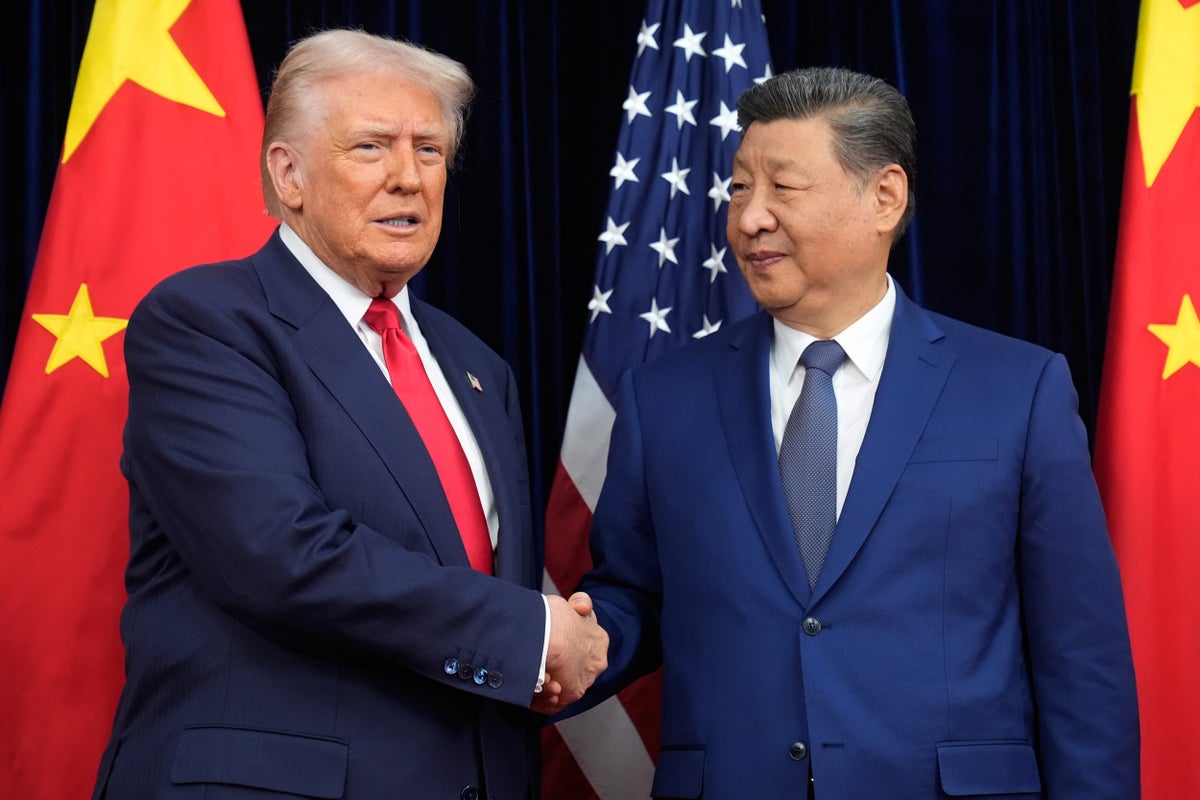
U.S President Donald Trump and Chinese President Xi Jinping concluded a high-stakes meeting in South Korea with a trade war truce, as Chinese shares pulled back from a decade high.
Investors were heartened by signs of cooling tensions between the world’s top two economies, yet remained defensive, recalling previous negotiations where promising starts often led to setbacks.
Following a nearly two-hour discussion, Donald Trump announced a deal to trim tariffs on China, in exchange for Beijing resuming U.S soybean purchases, ensuring rare earths exports, and tackling illicit fentanyl trade.
The market reaction remained choppy, with China’s yuan retreating from a near one-year high against the dollar post-meeting.
China’s commerce ministry confirmed the extension of their temporary trade truce for another year, an agreement reached by economic officials in Malaysia last week.
The benchmark Shanghai Composite Index hit its highest level since 2015 at the start of the session but closed down 0.73 per cent, inching away from the 10-year high it has been around this week. Hong Kong’s Hang Seng Index fell 0.2 per cent.
China’s CSI Rare Earth Industry rose more than 2 per cent, while defensive plays such as CSI Liquor Index and CSI Bank Index pared earlier gains. The AI sector CSI Artificial Intelligence Index was down nearly 2 per cent.
“The response from markets has been cautious in contrast to Trump’s enthusiastic characterisation of the meeting with Xi as ‘a 12 out of 10’,” said Besa Deda, chief economist at advisory firm William Buck in Sydney.
“There are still some structural issues that have been left unresolved, which could be contributing to the market’s response and takes some shine off the truce.”
The stakes are particularly high given the breadth of this year’s rally across Chinese markets.
Despite rollercoaster trade headlines, the Shanghai benchmark has surged nearly 20 per cent this year, overturning the “uninvestable” narrative that had dominated global investor sentiment toward Chinese markets in recent years.
Hong Kong’s Hang Seng has climbed over 30 per cent, ranking it among the best performing markets globally.
“Managing to meet and de-escalate after recent tensions will help remove a major uncertainty, lowering the immediate risks to end the year,” said Lynn Song, chief economist for Greater China at ING.
Though tariffs have throttled China’s shipments to the U.S, its exports to other parts of the world have remained resilient, while Beijing’s push to advance artificial intelligence and develop better semiconductors and innovative drugs have also given comfort to global investors this year.
Asian and global emerging markets funds made significant increases in their exposure to mainland China in September, HSBC said in a note on Monday, pointing out positioning in mainland China for Asia funds that HSBC tracks is near a 5-year high.
The latest tit-for-tat escalations erupted earlier this month as Trump unveiled additional levies of 100 per cent on China’s U.S.-bound exports by 1 November, in a reprisal against China curbing its critical rare earth exports.
The meeting on Thursday looked like an attempt to reset the U.S.-China narrative by reopening selective trade channels to restore confidence, rather than a fundamental reset of geopolitical relations, analysts say.
“It’s hard to call this a clean risk-on,” said Charu Chanana, chief investment strategist at Saxo in Singapore. “Equity traders have seen this playbook before — upbeat tone, little follow-through.”
There are plenty of gaps still left, though, in the Trump-Xi headlines with no timeline on rare earths, soybeans not a huge win if China’s crushers don’t need imports, and no mention of Nvidia’s Blackwell chips, she added.
Partial tariff rollbacks may also do little to help loss-making Chinese exporters and manufacturers, or reverse weak consumer demand at home.
“Overall, this looks like a tactical pause rather than a strategic breakthrough,” said Tareck Horchani, head of prime brokerage dealing at Maybank Securities.
